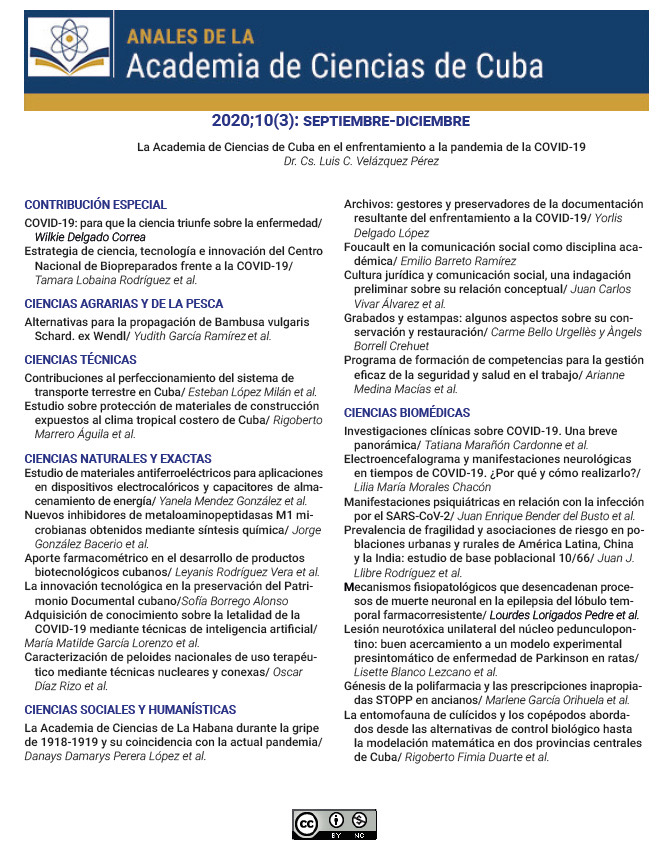Science, technology and innovation strategy of the National Center for Biological Products against COVID-19
Keywords:
biopharmaceutical industry, research-development, science and innovation, COVID-19, SARS-CoV-2Abstract
The National Center of Biological Products, a Science and Technology entity integrated into the actions of the State to update the economic model, takes on new challenges facing COVID-19 in its science and innovation activity. In just 10 weeks, a transport medium for SARS-CoV-2 was developed and registered; the application of Biomodulin T® was also introduced into the prevention protocols with more than 10 000 older adults treated, without any subject having acquired the disease. Two new drugs derived from the research were introduced and 2,8 millions of units of other eight products were produced. The main dynamic elements leading into the generation of innovative products were adapted to the new conditions, especially the management of highly qualified and motivated human capital, the most intensive use of productive and analytical capacities, complying with the high regulatory standards, the business structure, the logistics system, and commercial management.Downloads
Published
How to Cite
Issue
Section
License
The journal Anales de la Academia de Ciencias de Cuba protects copyright, and operates with a Creative Commons License 4.0 (Creative Commons Attribution-NonCommercial License 4.0). By publishing in it, authors allow themselves to copy, reproduce, distribute, publicly communicate their work and generate derivative works, as long as the original author is cited and acknowledged. They do not allow, however, the use of the original work for commercial or lucrative purposes.
The authors authorize the publication of their writings, retaining the authorship rights, and assigning and transferring to the magazine all the rights protected by the intellectual property laws that govern in Cuba, which imply editing to disseminate the work.
Authors may establish additional agreements for the non-exclusive distribution of the version of the work published in the journal (for example, placing it in an institutional repository or publishing it in a book), with recognition of having been first published in this journal.
To learn more, see https://creativecommons.org






